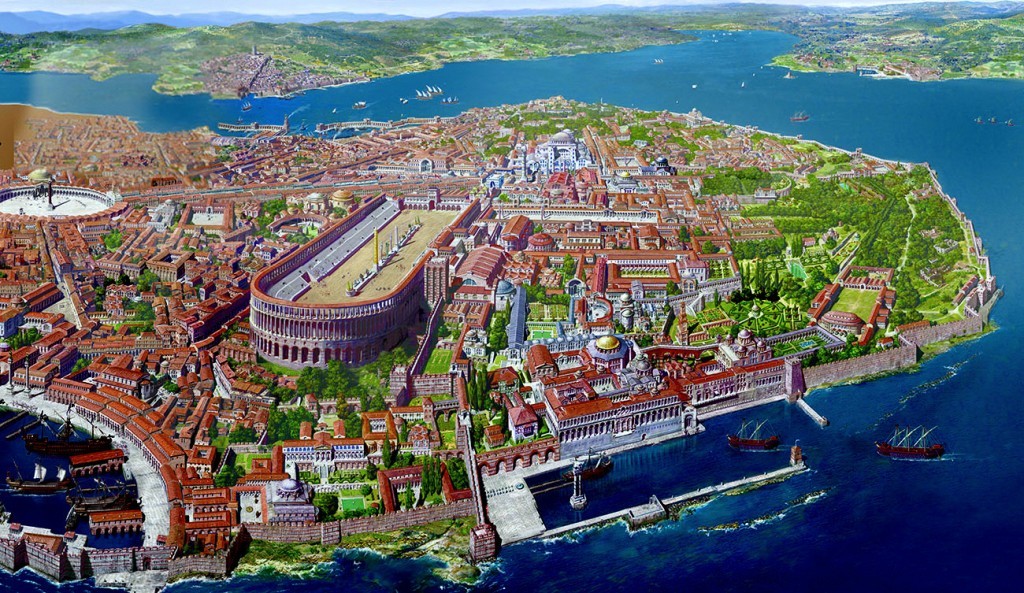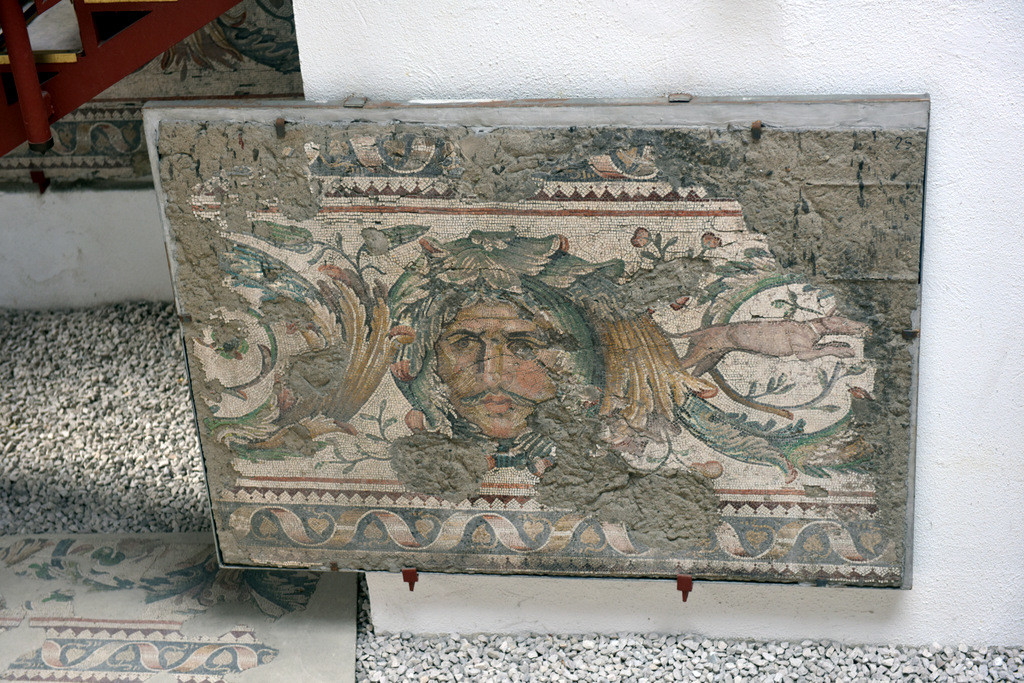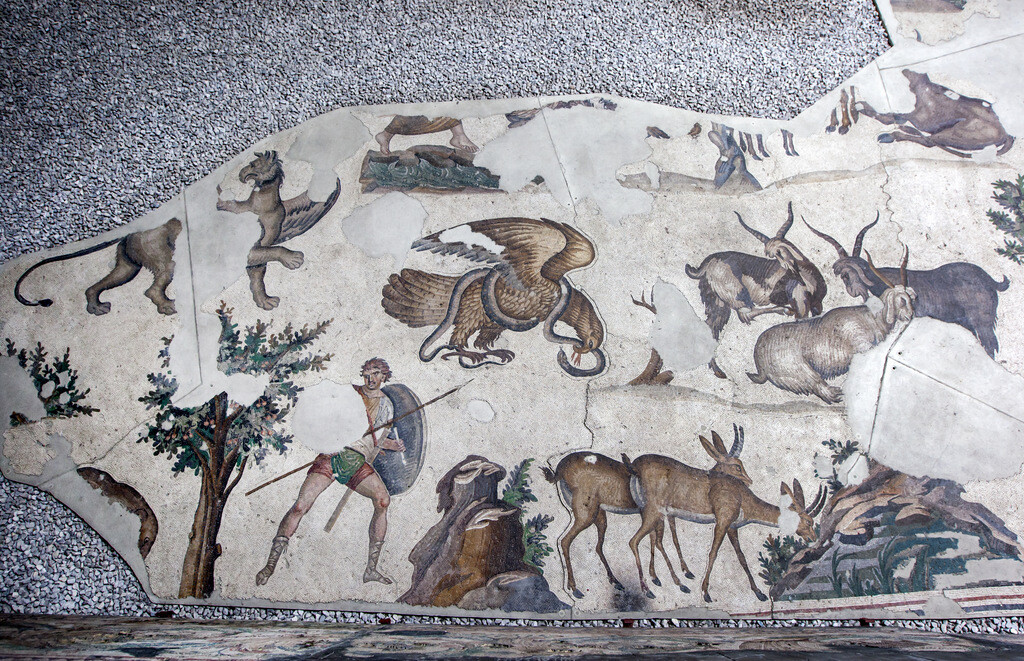The Great Palace Mosaic Museum reflects the splendor of the once magnificent Roman palace. Built in the 4th century by Emperor Constantine, the palace hosted Roman and Byzantine emperors for 800 years.
Although the Great Palace was abandoned from the 11th century and was replaced by the Palace of Blachernae, its fame has survived to the present day. The stunning mosaics that once decorated the floor of the palace are now on display in this museum.
In this article, you can find information about the history of the Great Palace and the entrance fee and visiting hours of the Great Palace Mosaics Museum. In order to properly tell the history of the palace, we will have to talk about the founding of Constantinople.
Table of Contents
The Great Palace of Constantinople
The ancient Greek city Byzantium was declared the co-capital of Roman Empire by Emperor Constantine in 330. Following this, iconic structures such as the Great Palace, the Hippodrome and the Church of the Holy Apostles were built in the city.
The Great Palace of Constantinople reached its peak during Emperor Justinian. In the picture above you can see the most distinctive building, the Hippodrome, and to the east of it the Great Palace. The Great Palace was a complex structure consisting of many pavilions, gardens, churches and activity areas. Additional buildings of the palace stretched all the way to the seaside.
The structures inside the Great Palace were rebuilt and changed at various times. When Byzantium was at its peak, there were details that fascinated the ambassadors who came to visit. For this reason, Byzantine Constantinople became famous as the golden city of the Middle Ages.
The palace, where the most important rulers of the Byzantine Empire lived for 800 years, lost its charm after the 11th century. The emperors began to live in the Palace of Blachernae on the banks of the Golden Horn. During the Sack of Constantinople (4th Crusade) in 1204, the Great Palace was almost completely destroyed.
Great Palace Mosaic Museum
The Great Palace Mosaic Museum displays the most beautiful Roman mosaics that have survived in Istanbul. The mosaics from the period when Roman art was not fully Christianized also refer to pagan beliefs. The mosaics, which were recovered from the palace during excavations, form a beautiful, coloured blanket of tiles, which depicts scenes from nature and mythological tales.
The museum shines a spotlight on a mosaic pavement, which was commissioned by Justinian I, that forms part of an original tile tapestry that was believed to have spanned over 3,500 metres. Around 250 square metres of the spectacular structure has been preserved.
The mosaics do not have any religious connotations or influences, and they celebrate landscapes, folklore, animals, hunting scenes and pictures of daily life. Examples include: a child feeding a donkey, bears eating apples, a hunter fighting a tiger.
Visitors to the Museum of Great Palace Mosaics can expect to be greeted with a dazzling display of vivid tiles that resemble a giant jigsaw puzzle. Although the tiles date back centuries, they have been lovingly restored and preserved, so the colours and the intricate details are still hugely impressive.
Great Palace Mosaic Museum Entrance Fee 2024
Great Palace Mosaic Museum entrance fee is 10 Euros as of 2024. Istanbul Museum Pass is valid at the entrance to the Istanbul Mosaic Museum. The information on the ticket price was last updated on March 20, 2024.
Istanbul Mosaic Museum Opening Hours 2024
Great Palace Mosaic Museum opening hours are between 09:00 in the morning and 19:00 in the evening. Please note that the ticket office closes at 18:30. This museum is open every day of the week. Information on visiting hours was last updated on March 20, 2024.
The Museum is Closed for Restoration!
Please note that the Great Palace Mosaic Museum has been closed to visitors since July 2023 for restoration. The museum was still closed when I updated this article on the 20th of March 2024.
Visiting times of museums in Istanbul may change due to events and renovations. Before going to the museum, I recommend you to visit the official website of The Museum and review the latest situation.
How to Get to The Museum?
In order to get to the Great Palace Mosaics Museum, you must first come to Sultanahmet. Sultanahmet is Istanbul’s most touristic district and is home to structures such as Hagia Sophia and Blue Mosque.
The Museum of Great Palace Mosaics is located in the Blue Mosque (locally known as Sultanahmet Camii) compound. You can find the museum by passing through the Arasta Bazaar next to the Blue Mosque.
Arasta Bazaar is like a small model of the world famous Grand Bazaar. There are shops inside that exhibit examples of Turkish handicrafts. When you come to the middle of Arasta Bazaar, you will see signs saying “Istanbul Mosaic Museum”. If you follow these signs, you can find the Great Palace Mosaic Museum.
Some archaeological remains from the palace will welcome you at the entrance to the museum. If the various Roman columns and friezes adorning the museum’s garden impress you, you can see more in the Istanbul Archeology Museum.
Conclusion
This museum is a hidden treasure for those who are interested in the Roman and Byzantine history in Istanbul. For this reason, it is among the best museums in Istanbul.
If you want to follow the traces of Roman and Byzantine art in Istanbul, you can visit Fethiye Museum and Chora Church (now Kariye Mosque), which are other museums in this category.
If you want to learn more about the museums in Istanbul, you can find dozens of similar articles in the Museums of Istanbul category of this site. Nearly 40 museums are introduced under this category.
Written by Serhat Engul




Great website Serhat however would be great to have the fact that the mosaics museum is shut at the start of the article rather than in the middle after a section that has entrance prices for 2024.
Dear Paul, there are articles on the site introducing 40 different museums of Istanbul and the articles have an order.
While the introduction section gives general information about the museums, entrance fees and visiting hours are noted in the lower lines.
If the Mosaic Museum was permanently closed, I would write it at the top as you said. However, I think it is reasonable for a temporary situation to be under the heading of visit information about the museum.
Since this is not Twitter or a news site, I do not feel obliged to write the most up-to-date information at the top. The main purpose of this article is to introduce the museum in all its aspects.
I understand you’re not happy to spare a few minutes of your time, but getting accurate, up-to-date information for free requires some effort.